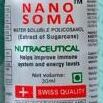Nanoemulsions in Focus: Advancements in Long-Chain Alcohol Formulations
In the landscape of pharmaceutical and cosmetic formulations, nanoemulsions have emerged as a groundbreaking delivery system, primarily due to their ability to enhance the solubility and bioavailability of poorly soluble compounds. Among the diverse range of nanoemulsion systems, those utilizing long-chain alcohols have garnered significant attention for their unique properties and potential applications. This article delves into the latest advancements in long-chain alcohol nanoemulsion formulations, highlighting their significance, preparation methods, applications, and future perspectives.
Understanding Nanoemulsions
Nanoemulsions are thermodynamically stable mixtures of two immiscible liquids, commonly water and oil, stabilized by surfactants. These formulations are characterized by droplet sizes typically ranging from 20 to 200 nanometers. The small droplet size enhances the surface area, leading to improved mass transfer and absorption characteristics, vital for drug delivery systems.
The Role of Long-Chain Alcohols
Long-chain alcohols, such as cetyl alcohol and stearyl alcohol, have been traditionally employed as emulsifiers and stabilizers in various formulations. Their amphiphilic nature allows them to decrease the interfacial tension between the oil and water phases, fostering the formation of stable emulsions. Recent studies have highlighted their potential when integrated into nanoemulsion systems, leading to enhanced stability, improved texture, and better antimicrobial properties.
Advancements in Formulation Techniques
The formulation of nanoemulsions using long-chain alcohols has seen remarkable progress over the past few years. Here are some key advancements:
-
High-Pressure Homogenization: This technique has been optimized for the production of long-chain alcohol nanoemulsions, ensuring size consistency and stability. Utilizing high shear forces, the method effectively reduces droplet size, resulting in a more homogenous product.
-
Ultrasonication: The integration of ultrasonic waves has proven effective in the formulation of nanoemulsions. This approach enhances the disruption of larger droplets, promoting the formation of smaller nano-sized droplets, thereby boosting the delivery efficiency of active ingredients without excessive energy input.
-
Microfluidics: Innovative microfluidic systems allow for precise control over droplet formation and size. By manipulating flow rates and mixing conditions, researchers can fine-tune the characteristics of long-chain alcohol nanoemulsions, leading to tailored delivery systems for specific applications.
- Green Chemistry Approaches: The push towards sustainability has led to the exploration of eco-friendly surfactants derived from natural sources, combined with long-chain alcohols to create environmentally benign nanoemulsions. These formulations offer significant promise in the cosmetics and food industries.
Applications of Long-Chain Alcohol Nanoemulsions
The application of long-chain alcohol nanoemulsions spans various fields:
-
Pharmaceuticals: Enhanced solubility of hydrophobic drugs is a critical challenge in drug formulation. Long-chain alcohol nanoemulsions have demonstrated significant potential in delivering poorly soluble compounds, improving therapeutic efficacy in drug delivery systems.
-
Cosmetics: The cosmetic industry benefits from the smooth texture and stability imparted by long-chain alcohol nanoemulsions. Their use in creams and lotions enhances skin feel and product performance, while also providing moisturizing properties.
-
Food Industry: Long-chain alcohol nanoemulsions are being explored in food formulations to improve flavor delivery and increase the bioavailability of certain nutrients and bioactive compounds.
- Agricultural Sciences: These formulations show promise as carriers for agrochemicals, improving the delivery and efficacy of pesticides and fertilizers while reducing environmental impact.
Future Perspectives
The future of long-chain alcohol nanoemulsions is promising, driven by ongoing research and technological advancements. Areas for further exploration include:
- Personalized Medicine: As the demand for personalized therapies increases, the versatility of long-chain alcohol nanoemulsions can be harnessed to create tailored formulations for individual patient needs.
- Combination Therapies: Investigating the synergistic effects of combining long-chain alcohol nanoemulsions with other delivery systems could enhance their therapeutic potential.
- Regulatory Pathways: As the popularity of nanoemulsions grows, establishing clear regulatory guidelines will be crucial for ensuring the safety and efficacy of these formulations in various applications.
Conclusion
Long-chain alcohol nanoemulsions represent a dynamic field of research with significant implications for the pharmaceutical, cosmetic, and food industries. With advancements in preparation techniques and a growing understanding of their unique properties, these formulations are set to revolutionize product performance and efficacy. As more studies illuminate their potential, the marriage of long-chain alcohols and nanoemulsion technology promises to reshape future formulations, driving innovation across multiple sectors.
